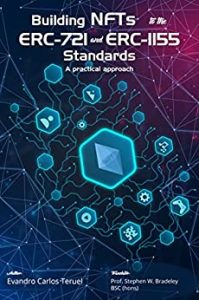Please share my lesson using your social media platforms. Use the links above.

Student FREE Bookstore (CLICK HERE)
https://www.fiverr.com/s/YDrPkl
Amazon.com.br Books
Toxological Analysis
Unlocking the Secrets of Poison Detection
SECTION ONE:
The world of toxicology is an intriguing and complex domain, where science and mystery often intertwine. Toxicological analysis plays a pivotal role in advancing our understanding of the effects and identification of poisonous substances. In this blog post, we’ll delve into the definition, significance, and applications of toxicological analysis.
VOCABULARY SECTION: intriguing, domain, intertwine, pivital role, delve
SECTION TWO:
Defining Toxicological Analysis

Toxicological analysis is a branch of forensic science dedicated to the detection, identification, and quantification of toxic substances within biological samples. These potentially harmful substances can range from drugs, heavy metals, pesticides to various chemical compounds that cause adverse health effects. The primary objective of toxicological analysis is to unveil the presence or absence of toxins in an individual’s body and shed light on their potential impact on one’s health or even cause of death.
VOCABULARY SECTION: branch, quantification, substances, harmful, range from, heavy metals, pesticides, adverse health effects, to unveil, absence, shed light on
SECTION THREE:
Critical Applications and Importance
Toxicological analysis serves a myriad of purposes across different sectors, showcasing its vital contribution to maintaining public safety and promoting a healthy society.
1. Forensic investigations: One common application of toxicological analysis is within criminal investigations. This technique helps uncover whether poisoning played a role in a victim’s death or if drugs were present during a traffic accident.
2. Legal disputes: Analysis of toxicants can serve as essential evidence in court cases by validating claims related to drug use or environmental toxicity exposure.
3. Clinical settings: Healthcare professionals can rely on toxicological analysis to detect drug abuse or accidental poisoning, leading to better-informed diagnosis and treatment decisions.
4. Workplace safety: Occupational toxicity can be detected early through periodic toxicological assessments, reducing the risk of chronic health issues among employees exposed to hazardous materials.
5. Environmental monitoring: Identifying hazardous substances in water sources, soil, or air enables public officials to perform necessary intervention measures for preserving ecosystems and safeguard human health.
VOCABULARY SECTION: serves as, a myriad, sectors, showcasing, uncover, played a role, victims, traffic accident, disputes, validating, accident, environmental, exposure, clinical setting, rely on, to detect, leading to, employees, hazardous, water sources, soil, enables, intervention, measures, to safeguard
GRAMMAR REVISION SECTION: (Second Conditional sentences)

SECTION FOUR:
Techniques Employed in Toxicological Analysis
Numerous methods have been developed to accurately identify and quantify toxins in various biological samples. Some of the most common techniques incorporated into toxicological analysis include:
1. Gas chromatography (GC): This analytical technique separates compounds based on their volatility, allowing for the detection of organic molecules, including drugs and other complex substances.
2. Mass spectrometry (MS): MS is considered a gold standard in toxicological analysis due to its ability to accurately determine a compound’s mass, providing reliable identification of toxins.
3. High-performance liquid chromatography (HPLC): With HPLC, substances are separated based on their interaction with a specific stationary phase, enabling the detection of polar and non-polar compounds.
4. Immunoassays: Immunoassay methods like enzyme-linked immunosorbent assay (ELISA) provide rapid results by engaging specific antibody-antigen interactions for toxin detection.
VOCABULARY SECTION: accurately, incorporate into, Gas chromatography , based on, volatility, detection of, molecules, Mass spectrometry, a gold standard, due to, mass, toxins, High-performance liquid chromatography, interaction with, engaging, antibody, antigen.
SECTION FIVE:
Toxicological analysis is undoubtedly an essential tool in various sectors responsible for upholding public safety, justice, and environmental health. This fascinating discipline harnesses cutting-edge technology and scientific methodology to reveal crucial information concerning toxin exposure and its potential consequences. As we continue to explore new techniques and broaden our knowledge, toxicology serves as a crucial pillar in protecting individuals from the harmful effects of poisonous substances.
VOCABULARY SECTION:
VIDEO SECTION: WATCH THE VIDEO AND ANSWER THE QUESTIONS BELOW.
QUESTIONS:
-
-
-
- Explain what is “snake venom”
- What is strychnine?
- Explain “skin irritation”
- Define genetic toxicology
- Define reproductive toxicology.
-
-
GRAMMAR SECTION TWO: Fill in the blanks to these prepositions.

WRITING SECTION:
Write a 100 word explanation of what reproductive toxicology is. In your text use two examples of the second conditional.
NEW BOOK: https://www.amazon.com.br/dp/B0CBSGZ8BF







